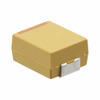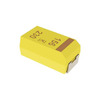What batteries can replace LR44
2023-11-13
14769
LR44 batteries not only occupy a prominent position in daily life, but also in professional application scenarios. Watches, calculators, even life-dependent medical devices like insulin pumps. These are all areas where LR44 batteries come into play. Every aspect of the battery’s chemical composition, physical size, voltage and operating temperature range is carefully crafted to adapt to the unique requirements of different scenarios. In this article, we will analyze the specifications and characteristics of LR44 batteries in depth from various dimensions, and also cover equivalent alternative options. In this way, you will get a three-dimensional and multi-angle understanding, and then fully understand this multi-functional power supply unit.
Catalog
1. What exactly is an LR44 battery?
2. Detailed specification analysis of LR44 battery
3. In-depth understanding of the characteristics of LR44 batteries
4. LR44 battery voltage: influence of multiple factors and application considerations
5. LR44 batteries are used in many fields: from medical to daily entertainment
6. LR44 battery and its equivalent options
7. Detailed comparison of LR44 battery equivalent and alternative batteries

Figure 1: LR44 Battery
1. What exactly is an LR44 battery?
LR44 battery is a member of the alkaline manganese battery family. LR44 button battery is widely used in various small electronic devices. Compared with other battery types, it cleverly finds a balance between size and power output, making it the preferred choice of many manufacturers and consumers. We can learn more about LR44 batteries from the aspects of brand coverage, size details, voltage and temperature factors.
Judging from the brand coverage of LR44 batteries, the production and sales of LR44 batteries are not limited to big brands such as Energizer or Duracell. Many smaller, regional brands are also active in the production of LR44 batteries.
The LR44 battery has a diameter of 11.6 mm (approximately 0.457 inches) and a height of 5.4 mm (approximately 0.213 inches), making it particularly suitable for applications where size is a strict restriction.

Figure 2: LR44 Battery
Judging from the voltage and temperature factors of the LR44 battery, under normal circumstances, the LR44 battery can provide a voltage of 1.5 volts. In terms of temperature, it can operate in the range of 0°C to 60°C, and is particularly robust near 20°C.
The usage scenarios of LR44 batteries are far more than toys, remote controls, watches and calculators. Its applicable scenarios are surprisingly many. Here are some additional application examples:
Medical device field: including but not limited to ear thermometers and blood glucose meters.
Portable audio devices: For example, certain types of wireless headphones.
Outdoor gear: involves things like small flashlights and portable GPS devices.

Figure 3: LR44 Battery Application Display
2. Detailed specification analysis of LR44 battery
When it comes to choosing a battery, we must first understand its specifications. In this section, we'll take a closer look at several key specifications of the LR44 battery, including its operating capacity, terminal type, and weight.

Figure 4: LR44 Battery
2.1. Average working capacity:
At a temperature of 23°C and a load of 4.7k ohms, the average operating capacity of the LR44 battery stabilizes at 120mAh once the voltage drops to 0.9V. That is, as long as the ambient temperature and resistive load are in ideal conditions, this battery can continuously supply 120 mAh of current. Take a digital thermometer as an example. A standard digital thermometer typically consumes about 2.5 milliamps. An LR44 battery with a 120mAh working capacity can theoretically work continuously for about 48 hours in this application.
2.2. Terminal structure:
The LR44 battery uses flat contact terminals, which is a smart design choice to optimize current output stability. At the same time, it also greatly simplifies the battery installation process.

Figure 5: LR44 Battery
2.3. Average weight:
The average weight of an LR44 battery is approximately 2.0 grams. The lightweight design makes it particularly useful in devices that require a lightweight power source, such as watches and hearing aids.
Taking these specific specifications into consideration, the LR44 battery is undoubtedly a flexible and multi-application choice. Armed with these granular specifications, you have the ability to make clearer and more adaptable decisions.
3. In-depth understanding of the characteristics of LR44 batteries
LR44 batteries have wide adaptability in diverse application environments due to their unique performance parameters. In order to further illustrate the practical value brought by these features, several key performance indicators will be listed below and examples will be used to provide a more intuitive explanation.

Figure 6: LR44 Battery
3.1. Minimum open circuit voltage (OCV):
LR44 batteries can guarantee a minimum open circuit voltage of 1.50 volts. This means that even under less than ideal conditions, the battery can still deliver at least 1.50 volts. Such as home smoke alarms. In such applications, 1.50 volts is usually sufficient to support operation for months or even years, significantly reducing the need for battery replacement.
3.2. Minimum closed circuit voltage (CCV):
When the ambient temperature drops to -10°C and the load is 200 ohms/5 seconds, the LR44 battery can still maintain a minimum closed circuit voltage of 1.10 volts. This data clearly shows that the battery can still maintain a relatively stable voltage output even in challenging environments. This feature is especially valuable in electronic devices used in skiing or other cold environments, for example.
3.3. Minimum working capacity:
The minimum capacity of a LR44 battery is 08mAh at voltage reduced to 0.9V and a 4.7k ohm load. Although this value is not high, in low-power devices, it is more than enough. Take digital thermometers as an example. Such devices usually have relatively small current requirements, so a capacity of 08mAh can provide reliable energy support in a short time.
These detailed characteristic analyzes not only give you a deeper and more comprehensive understanding of LR44 batteries, but also serve as a reference for you to make more informed and efficient power supply choices in different application scenarios.
4. LR44 battery voltage: influence of multiple factors and application considerations
Battery voltage, especially the LR44 model, not only has specific characteristics, but is also affected by a variety of factors that together create a complete picture of its performance.
4.1 Nominal voltage and chemical composition
The nominal voltage of LR44 batteries is usually 1.5 volts. This value is actually closely related to the chemical composition of the battery. Generally speaking, alkaline manganese batteries are common representative batteries with a standard voltage of 1.5 volts. But if you encounter other types of batteries, such as lithium batteries or silver-oxygen batteries, their nominal voltage may be different from this. For example, Silver Oxygen LR44 battery. Its nominal voltage is generally 1.55 volts, which may be more suitable for some precision equipment, such as medical instruments.

Figure 7: LR44 Battery
4.2 Influence factors of life, storage and voltage
Battery life and storage conditions. Both of these can significantly affect the voltage performance of the battery. Long-term storage may cause voltage drops. Especially if the storage environment temperature is not ideal.
4.3 Match the cut-off voltage with the equipment
Generally speaking, the cutoff voltage of LR44 batteries swings between 0.9 and 1.0 volts. But this range is not rigid. In fact, the specific cutoff voltage requirements of the device will also have a corresponding impact. Consider a flashlight. Some require a higher cut-off voltage, reaching 1.0 volts. In this scenario, the LR44 battery may not be able to meet its requirements.
5. LR44 batteries are used in many fields: from medical to daily entertainment
LR44 batteries have significant applications in multiple industries and devices. The combination of portability, stable voltage output, and wide temperature adaptability makes it universally popular. Some application examples will be introduced in detail below.

Figure 8: LR44 Battery
5.1 Medical equipment
In the medical field, the existence of LR44 batteries is not only powerful but should not be underestimated.
5.2 Insulin pump
Consider an insulin pump: a device used to deliver insulin to a diabetic patient on a regular or continuous basis. Here, battery reliability is paramount. Insufficient battery performance may jeopardize the accuracy of drug delivery.
5.3 Thermometer
Think of a thermometer. In situations where accurate body temperature measurement is required, stable voltage output, provided by LR44, becomes the basis for accurate measurement.
5.4 Drug delivery systems
Similar to insulin pumps, drug delivery systems require reliability and precision, making battery selection particularly sensitive.
5.5 Calculators and portable electronic devices
Calculators, especially professional engineering calculators, rely on the long life and stable output of LR44 batteries. For example, in fields that require highly precise calculations—such as construction or engineering—a stable power supply is a consideration related to calculation accuracy. Therefore, LR44 batteries are the best choice.
5.6 Toys and Game Equipment
From simple toys for children to highly complex electronic game devices, LR44 batteries are widely used because of their small size and high efficiency. Especially in toys that require remote control, such as drones or remote control cars, using LR44 can reduce the overall equipment load, thereby optimizing the operating experience and flight time.
In short, LR44 batteries have many advantages and are widely used, and their influencing factors are also diverse: voltage, capacity, reliability, etc. These must be considered carefully.
6. LR44 battery and its equivalent options
6.1 Most common LR44 battery equivalents
LR44 battery is a commonly used 1.5V alkaline button battery, widely used in various small electronic devices, such as calculators, remote controls and some wearable devices. There are several equivalent battery models on the market that can replace the LR44. The most typical ones include:
AG13 Battery: This battery is very close to the LR44 battery in terms of size and voltage. Therefore, if you cannot find LR44 batteries, AG13 batteries are a viable alternative option.

Figure 9: AG13 Battery
L1154 Battery and LR1154 Battery: Apart from slightly different names, these two batteries are almost identical to the LR44 battery in terms of performance and compatibility. It is worth noting that different manufacturers may use different names to refer to this type of product.

Figure 10: L1154 Battery
157 Batteries: Although less common than other models, 157 batteries are interchangeable with LR44 batteries in terms of voltage and capacity.
6.2 Silver Oxide Equivalent Cell Options
Silver oxide batteries can effectively replace LR44 batteries, especially in terms of durability and stability. Silver oxide equivalent batteries to note are:
SR44 battery: Especially suitable for high-energy consumption scenarios, such as high-end cameras, it is often prioritized due to its longer service life.
SR44SW battery: similar to SR44 battery, but more suitable for low energy consumption equipment applications.

Figure 11: SR44SW Battery
303 battery vs. 357 battery: Both are silver oxide batteries, and in certain applications, such as high-precision medical equipment, they do provide more stable current output.

Figure 12: 303 Battery/357 Battery
For example, the LR44 battery used in a home blood pressure monitor may need to be replaced every six months. However, switching to SR44 batteries may extend this cycle to one year or longer, effectively reducing maintenance costs and optimizing user experience.
Therefore, it is wise to choose an equivalent but better-performing battery for your respective device and usage scenario. Before purchasing, understanding and comparing the unique performance indicators and applicable scope of various batteries cannot be ignored.
7. Detailed comparison of LR44 battery equivalent and alternative batteries
7.1. Alkaline batteries
7.1.1. Chemical composition: alkaline
LR44 batteries use an alkaline chemistry, typically consisting of zinc and manganese hydroxide. This battery structure not only provides stable current output, but is also cost-effective.
7.1.2. Nominal voltage: 1.5V
A brand new LR44 battery typically has a voltage of 1.5V when not in use. This makes it suitable for most small electronic devices requiring 1.5V power.
7.1.3. Cut-off voltage: 1.0V
When the battery voltage drops to 1.0V or below, the LR44 will often stop working or not provide enough energy to drive the device.
7.1.4. Note: Voltage decreases over time
The LR44's voltage will gradually decrease over time due to chemical reactions within the alkaline battery. This means that device performance may be affected near the end of battery life.
7.1.5. Common labels: LR44, 76A, AG13, LR1154, A76
Different manufacturers and regions may use different labels for similar batteries. Among them, 76A, AG13, LR1154 and A76 can all be regarded as equivalent batteries to LR44.
7.1.6. Typical capacity: 110-130 mAh
LR44 batteries typically have a battery capacity of 110 to 130 milliamp hours (mAh), which determines how long the battery can power your device.
Take a simple home alarm clock as an example. Such devices generally consume less energy. If you choose LR44 batteries, they can generally support the device for about two months. However, for applications requiring longer battery life, alternative batteries with higher capacity or more stable voltage may need to be considered.
Through the above indicators, it is not difficult to see that LR44 is a battery that is suitable for a variety of occasions and has relatively balanced performance. However, when choosing, users should make the most appropriate decision based on specific equipment and usage needs.
7.2. Silver oxide battery: detailed comparison and application suggestions
7.2.1. Chemical composition: silver oxide
Silver oxide batteries usually use silver and zinc oxide as the main active materials. Compared to alkaline batteries, they have higher energy density and voltage stability, but are also relatively more expensive.
7.2.2. Nominal voltage: 1.55V
Compared to alkaline batteries, silver oxide batteries offer a slightly higher nominal voltage of 1.5V, which is 1.55V. This may be an advantage in certain equipment with high precision and performance requirements.
7.2.3. Cut-off voltage: 1.2V
The cut-off voltage of this battery is 1.2V. When the battery voltage drops to this level or below, replacement of the battery should be considered to ensure normal operation of the device.
7.2.4. Note: The voltage is very stable
A significant advantage of silver oxide batteries is that their voltage is very stable and rarely drops significantly over time. This makes it ideal for precision instruments that require stable voltage.
7.2.5. Common labels: SR44W, SR44, SR44SW, 157, 357, 303, SG13, AG13, S76, A76, SR1154
Silver oxide batteries have several common labels due to the variety of manufacturers and brands on the market. However, SR44W, SR44, SR44SW, 157, 357, 303, SG13, AG13, S76, A76 and SR1154 are all common equivalent options.
7.2.6. Typical capacity: 150-200 mAh
Silver oxide batteries generally have a capacity range of 150-200 mAh, which is significantly higher than alkaline batteries, giving it a clear advantage in terms of battery life.
Taking a portable blood glucose meter as an example, the device requires a highly precise and stable voltage to accurately measure blood glucose levels. In this case, silver oxide batteries (such as SR44W) may be a better choice as they provide a more stable voltage and longer life.
Silver oxide batteries have obvious advantages in high performance and precision instrument applications. However, considering the cost factor, users should make wise choices based on specific needs.
7.3. Zinc gas battery: in-depth analysis and application scenarios
7.3.1. Chemical composition: zinc gas
Zinc gas batteries mainly use zinc and oxygen as the basis of the chemical reaction. This structure allows the battery to perform well in some specific applications, especially in terms of capacity and longevity.
7.3.1. Nominal voltage: 1.4V
Although most small batteries have a nominal voltage of 1.5V, zinc gas batteries have a slightly lower nominal voltage of 1.4V. This requires special attention when selecting batteries for equipment with high voltage requirements.
7.3.1. Cut-off voltage: 1.2V
Similar to other battery types, zinc gas batteries should be replaced when the voltage drops to 1.2V or less to maintain optimal performance of the device.
7.3.1. Note: The voltage is slightly lower but the capacity is large. It is mainly used for hearing aids.
Although zinc gas batteries have a relatively low voltage output, they generally have greater capacity. This is particularly useful for devices that require long periods of use and consume large amounts of power, such as hearing aids.
7.3.1. Commonly used labels: 675, Blue Tab, ZA675, PR44, 7003ZD
Due to the diversity of manufacturers and brands, this type of battery has multiple labels on the market, including but not limited to 675, Blue Tab, ZA675, PR44 and 7003ZD.
7.3.1. Typical capacity: 600-700 mAh
In terms of capacity, zinc gas batteries generally perform very well, with capacities typically between 600-700 mAh, which is unmatched by most similar batteries.
In the field of hearing aids, battery capacity and life are particularly critical. Hearing aid users often prefer zinc gas batteries because of their high capacity and because their cut-off voltage is similar to that of regular alkaline or silver oxide batteries, meaning users do not have to replace batteries as frequently.
Zinc gas batteries are a very suitable choice in some situations with special needs. Especially in devices such as hearing aids that have high requirements on battery performance, they demonstrate advantages that cannot be ignored.
7.4. Ni-MH batteries: comprehensive properties and practicality
7.4.1. Chemical composition: nickel metal hydride
Nickel Metal Hydride (NiMH) batteries, whose main constituent elements are nickel and a certain metal hydride (mostly cobalt or copper), appeared on the commercial market in the 1990s. Ni-MH batteries with unique advantages have gradually highlighted their value in special application scenarios.
7.4.2. Nominal voltage: not too high but sufficient 1.2V
When it comes to nickel-metal hydride batteries, their nominal voltage is often 1.2V, which is slightly inferior to the 1.5V of alkaline or lithium batteries. Therefore, careful consideration is inevitable when deciding to use it in high-voltage demand scenarios.
7.4.3. Cut-off voltage: consistent and stable 1.2V
Quite uniquely, the cut-off voltage of a NiMH battery is the same as its nominal voltage. In other words, this type of battery has extremely high voltage stability.
7.4.4. Applications and limitations: rechargeable but rare
The recharge function does exist in nickel-metal hydride batteries, but its market appearance is not high. This is directly related to its relatively low voltage and energy density.
7.4.5. Identification features: customized label display application and size
Because NiMH batteries are often customized for specific applications, these batteries are often equipped with specific labels that demonstrate their rechargeable characteristics and battery size, so their purpose is readily apparent despite the small quantity.
7.4.6. Energy reserve: limited 85-90 mAh
With a typical capacity of 85-90 mAh, the applicability of these batteries in high-energy-consuming devices is somewhat limited.
In rare but critical emergency power systems, NiMH batteries become an option to consider. Despite its limited capacity, its dual advantages of rechargeability and voltage stability still give it a place.
Overall, nickel-metal hydride batteries may not be advantageous in terms of widespread application, but in special environments with high requirements for stable voltage and rechargeability, they still have application potential that cannot be underestimated.
7.5. Mercury-oxygen battery: historical background and practical limitations
7.5.1. Chemical composition: mercury oxide
Mercury-oxygen batteries, whose main components are mercury and oxides, entered the historical stage mainly in the 1950s and 1960s. At that time, they were widely embedded in a variety of portable devices and electronic products.
7.5.2. Standard voltage: 1.35V
This battery type, with its 1.35V voltage as a benchmark, does show unique advantages in certain application environments compared to other battery types.
7.5.3. Tail voltage: 1.1V
At the end of its life cycle, the voltage of a mercury-oxygen battery typically drops to 1.1V. Such a relatively low cut-off voltage undoubtedly requires some attention during the circuit design stage.
7.5.4. Usage warning: mercury and phase-out
Due to the large amount of mercury contained in these batteries, these batteries have been gradually restricted or completely eliminated in many regions and countries. Environmental considerations have become the main reason for its replacement by other greener batteries.
7.5.5. Identification label: MR44 battery, MR1154 battery
When users are looking for replacement mercury-oxygen batteries, they will often see labels like "MR44" or "MR1154." The purpose of these labels is mainly to allow users to find the right battery faster.
7.5.6. General capacity: 180-200 mAh
Even though mercury-oxygen batteries are now becoming scarce, their energy storage capacity is still quite good, usually ranging from 180 to 200 mAh.
Mercury-oxygen cells primarily served older cameras in their early years, particularly when powering internal components such as electronic light meters. The design of this type of equipment often takes into account the voltage and capacity parameters of mercury-oxygen batteries.
Although mercury-oxygen batteries have almost completely withdrawn from the market due to environmental and legal constraints, they still have a history and reference value that cannot be ignored in certain older equipment, especially those for which they were originally designed.
The LR44 battery has demonstrated unusual advantages and characteristics, making it not only perform well in multiple use environments, but also win wide recognition. This article provides an in-depth analysis of its inherent advantages, from the precision of physical specifications to the diversification of electrochemical composition, and even its applicability in various applications and optional backup battery solutions. Interestingly, this battery not only has a wide range of applications in alkaline configurations, but also covers multiple chemical options such as silver oxide, zinc air, and nickel metal hydride to cater to the complexity of different power needs. Thanks to this accurate and comprehensive information, both ordinary consumers and professionals can make more practical and informed decisions on power supply selection. In short, it's trustworthy. In many daily or professional needs, the LR44 battery has demonstrated its value and solid reliability that cannot be underestimated.
 ABOUT US
Customer satisfaction every time. Mutual trust and common interests.
ABOUT US
Customer satisfaction every time. Mutual trust and common interests.
function test. The highest cost-effective products and the best service is our eternal commitment.
Hot Article
- Are CR2032 and CR2016 Interchangeable
- MOSFET: Definition, Working Principle and Selection
- Relay Installation and Testing, Interpretation of Relay Wiring Diagrams
- CR2016 vs. CR2032 What’s the difference
- NPN vs. PNP: What's the Difference?
- esp32 vs stm32: which microcontroller is better for you?
- LM358 Dual Operational Amplifier Comprehensive Guide: Pinouts, Circuit Diagrams, Equivalents, Useful Examples
- CR2032 VS DL2032 VS CR2025 Comparison Guide
- Understanding the Differences ESP32 and ESP32-S3 Technical and Performance Analysis
- Detailed Analysis of RC Series Circuit
 What is a Resistor
What is a Resistor
2023-11-14
 Lithium Manganese Round Batteries: CR2450 vs CR2032
Lithium Manganese Round Batteries: CR2450 vs CR2032
2025-04-03
Hot Part Number
 C3216JB2A105K160AA
C3216JB2A105K160AA C1005NP01H121J050BA
C1005NP01H121J050BA GRM1885C2A5R7CA01D
GRM1885C2A5R7CA01D GCM31B7U2E822JX01L
GCM31B7U2E822JX01L GQM1875C2E3R0WB12D
GQM1875C2E3R0WB12D TRJC107M010RRJ
TRJC107M010RRJ T495B156K016ATE500
T495B156K016ATE500 165034
165034 MCC21-14IO8B
MCC21-14IO8B XR16L651CM-F
XR16L651CM-F
- IR3578MTRPBF
- BD6231F-E2
- V24C15C100B
- VE-J54-IY
- ACPM-5813-TR1
- SI4704-D60-GUR
- VE-260-EY
- MCC90-12i01
- VI-242-EX
- VI-882670
- BQ27425YZFT-G1
- VND810SPTR-E
- LP3982IMM-ADJ
- STM32L100RCT6
- ATA5702F1000M-WDQW
- REF02AU/2K5
- T491A336M006AT4280
- LTC3850IGN-2#PBF
- INA2137UA/2K5
- AD8205YRZ
- FGH60N60SFDTU
- 74LVC1G384GW
- AP1601M8A
- GM2242BB
- HMC468LP3E
- IDT7015S12J
- MC68020CFC16E
- RB050LAM-60TF
- TC58NVG0S3AFT05
- TC74AC390F
- DE56SH149KJ3ALC
- KE5M4U2270CFP
- N85C220-66
- PCI1250GFN
- TMZ111-F16
- WTC6212BSI
- H9TKNNNBPDMRAR-NGHR
- KPFA-2507BRGC-11
- EEEFTV151XAP